Storm Door Questions and Answers: A Homeowner’s FAQ Guide
Table of Contents:
- Storm Door vs. Screen Door
- Benefits of Storm Doors
- Styles & Materials
- DIY vs. Pro Installation
- Maintenance & Cleaning
- Common Problems & Fixes
- Choosing the Right Storm Door
- Storm Doors & Pet Safety
- Storm Doors & Child Safety
- Compatibility with Smart Locks
- Painting or Refinishing
- Does Your Entry Door Need One?
- Typical Lifespan
- Double Door Compatibility
If you're thinking about adding a storm door to your home, you may have a few questions. Actually, even if you already have one, you might have questions, such as how to fix a pesky latch or clean the glass without streaks.
At Graber Supply, we provide storm doors (and other building supplies) to the North-Central Indiana region. We believe your home should be inviting, beautiful, and efficient. That is why we have been offering quality home building supplies and services for over 35 years,
Whether you own a storm door yet or not, you're in the right place. Here are the most common storm door questions and answers to help you get the most out of this often-overlooked entry upgrade.
Ready to learn more? Let’s open the door to some answers!
Table of Contents
What Is a Storm Door and How Is It Different From a Screen Door?
A storm door is an additional outer door installed in front of your main entry door. It usually features a combination of glass and screen panels.
- A storm door is designed to protect your main door from the elements—think wind, rain, snow, and bugs. Think of it as a shield over your main door.
- A screen door, on the other hand, is typically just a frame with mesh for ventilation, offering minimal protection against the weather. A screen door allows for ventilation while keeping bugs out.
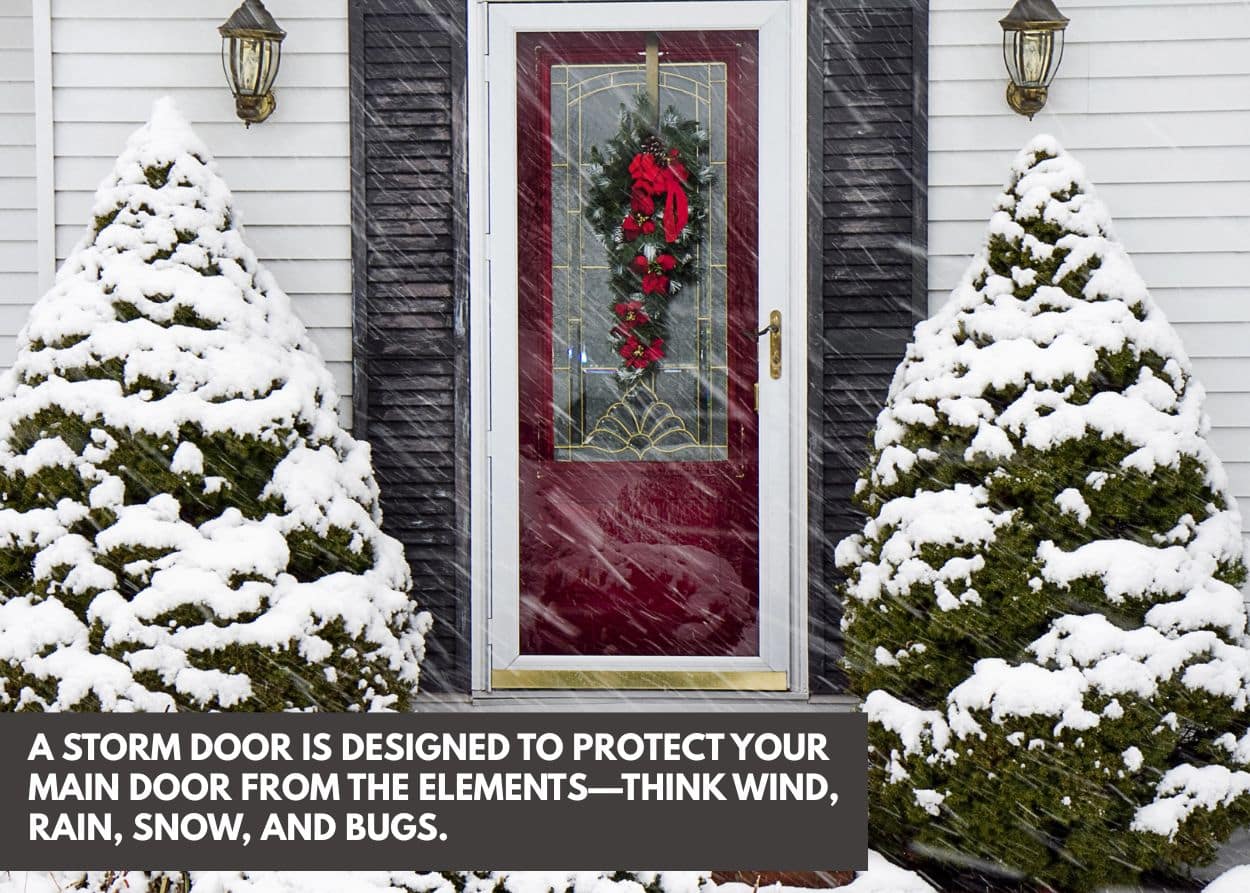
The bottom line? Storm doors are built for year-round protection and energy efficiency. Screen doors? More for breezy summer airflow.
What Are the Benefits of Installing a Storm Door?
Installing a storm door comes with a surprising number of perks:
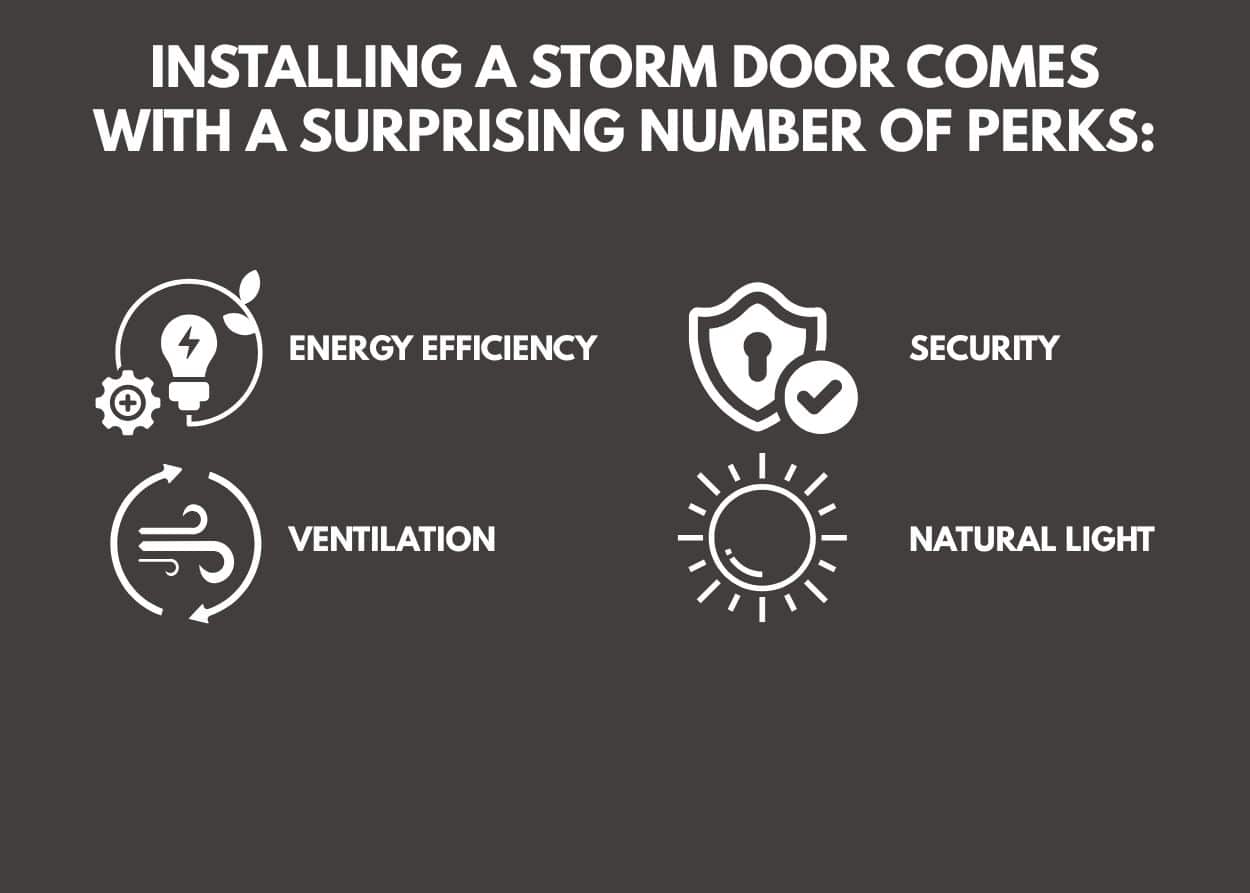
- Energy Efficiency: Adds an extra layer of insulation, which can reduce heating and cooling costs by minimizing drafts.
- Ventilation: Retractable or removable screens let you open your main door and enjoy airflow without letting bugs in.
- Security: Many storm doors come with built-in keyed locks, multi-point locking systems, and shatter-resistant glass.
- Natural Light: They enhance the appearance of your front entry and allow more natural light to enter when the main door is open, even while it’s raining, snowing, or bug-infested outside.
It’s a minor upgrade that pays off in comfort, safety, and style.
What Are the Different Styles and Materials of Storm Doors?
Storm doors aren’t one-size-fits-all. You’ve got options depending on your needs and the look you want.
Materials:
- Aluminum: Lightweight, rust-resistant, and requires little upkeep. It’s the most common and cost-effective material for storm doors.
- Wood: Traditional and elegant, but it can warp or peel over time without regular maintenance.
- Fiberglass or composite: Durable, well-insulated, and can mimic the look of wood with less upkeep.
Styles:
- Full-View: Ideal for optimal visibility and allowing in light. Great if you have a decorative main door.
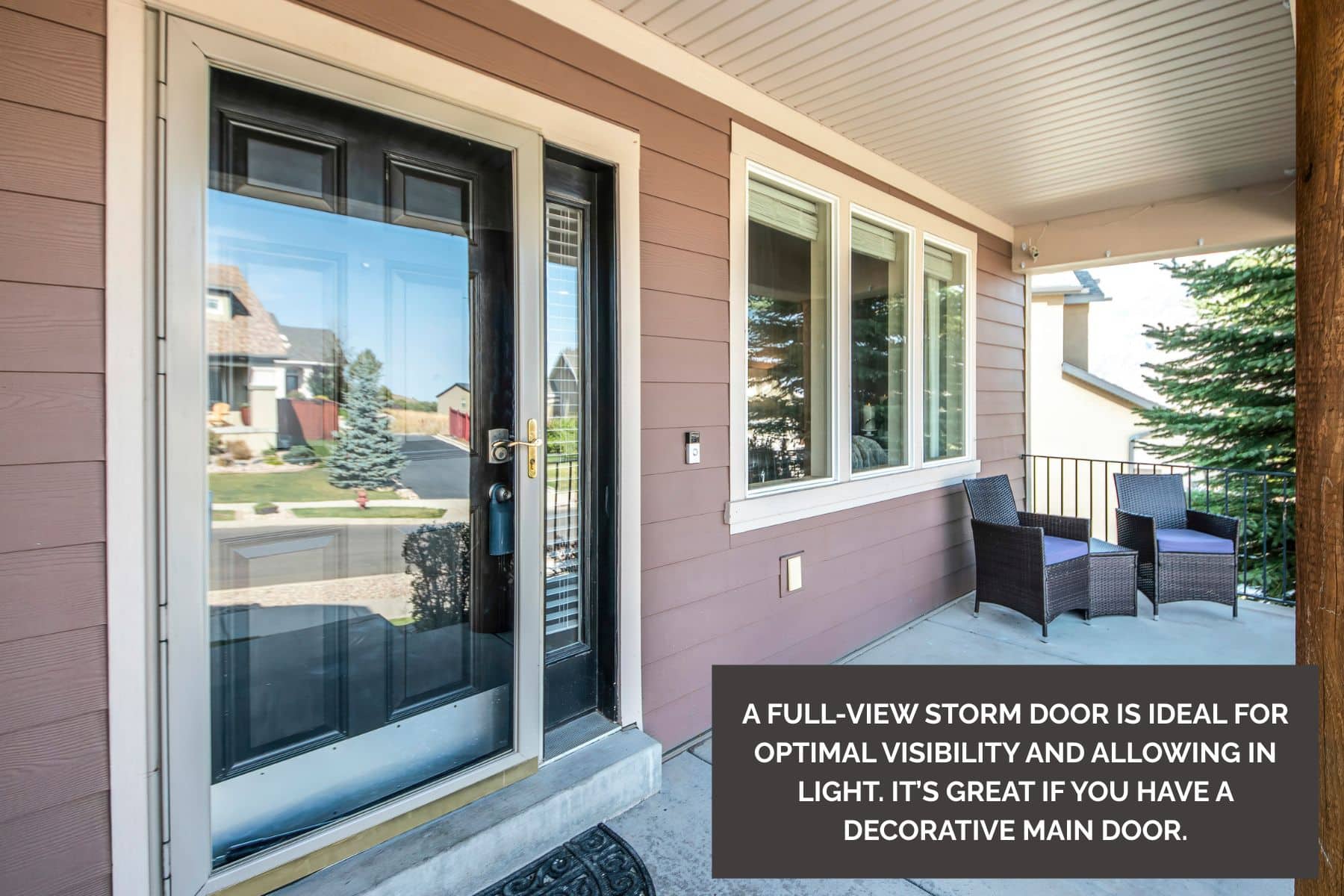
- Mid-View: Offers protection at the bottom (great for pet owners) while allowing airflow at the top.
- High-View: Primarily for airflow and security, with the screen or glass placed only at the top portion.
- Retractable Screen: Combines full-view glass with a hidden screen that rolls down when needed, providing great flexibility.
Choose based on function, foot traffic, pets, and how much maintenance you're willing to take on.
Should I Install the Storm Door Myself or Call a Pro?
- You can install a storm door yourself if your opening is standard-sized and you're comfortable using tools.
- Tools needed: Drill, screwdriver, measuring tape, and possibly a hacksaw for trimming.
- Average time: 2–3 hours for a DIY job.
- Cost range: DIY kits range from $150 to $400. Professional installation can cost $300–$600 or more, depending on complexity.
On the other hand, if your door frame is out of square, you're short on time, or want a perfect fit and warranty, consider calling a pro!
How Do I Maintain and Clean a Storm Door?
Keep your door working and looking great with these tips:
- Glass panels: Use a non-abrasive glass cleaner with a microfiber cloth to prevent streaks. Avoid ammonia on tinted or coated glass.
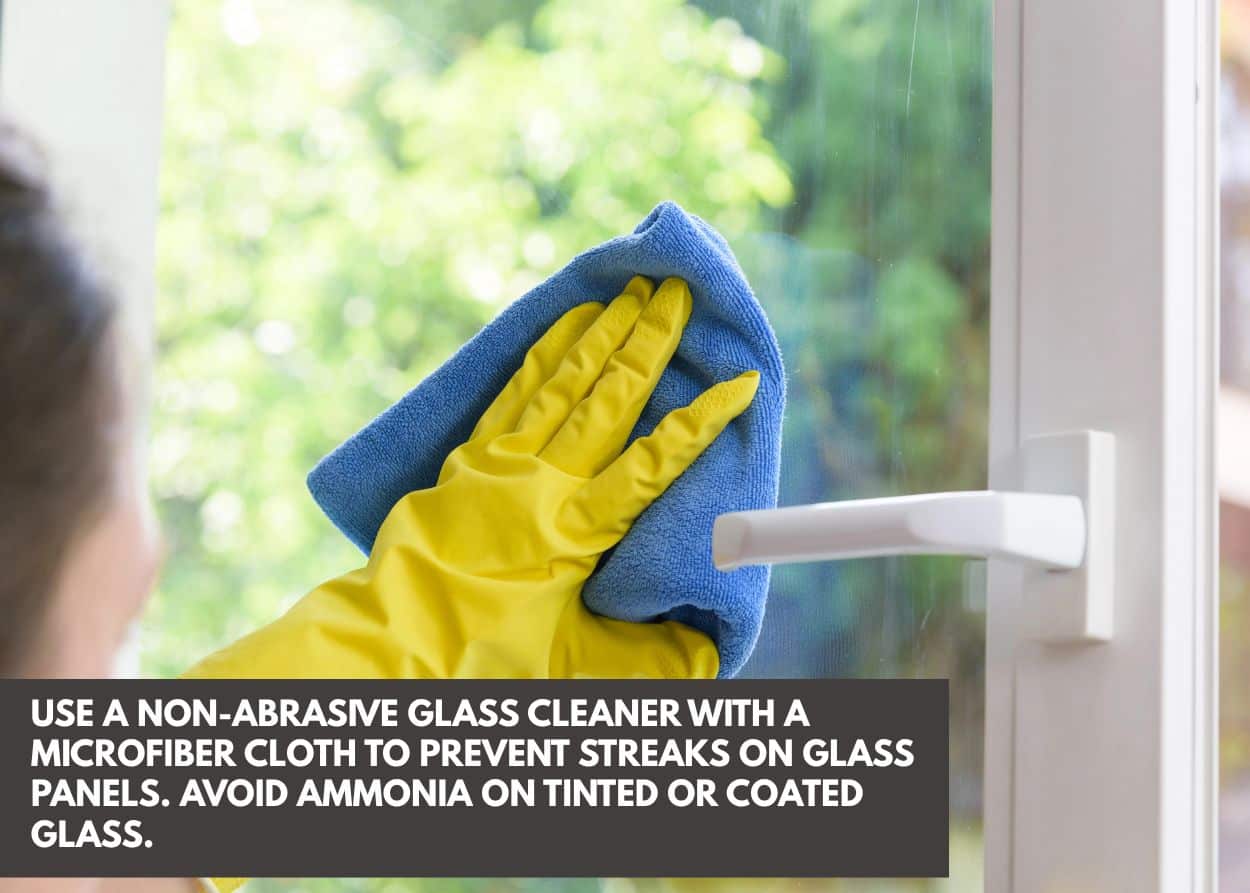
- Screens: Remove and rinse with water or use a vacuum with a soft brush attachment.
- Hardware: Apply silicone spray or a light oil to hinges, closers, and locks every 6–12 months.
- Seals and weatherstripping: Check regularly for wear or gaps and replace as needed to maintain energy efficiency.
A little care goes a long way in extending the life of your door.
Common Storm Door Problems and How to Fix Them
Even the best storm doors run into issues. Here's how to handle the most common ones:
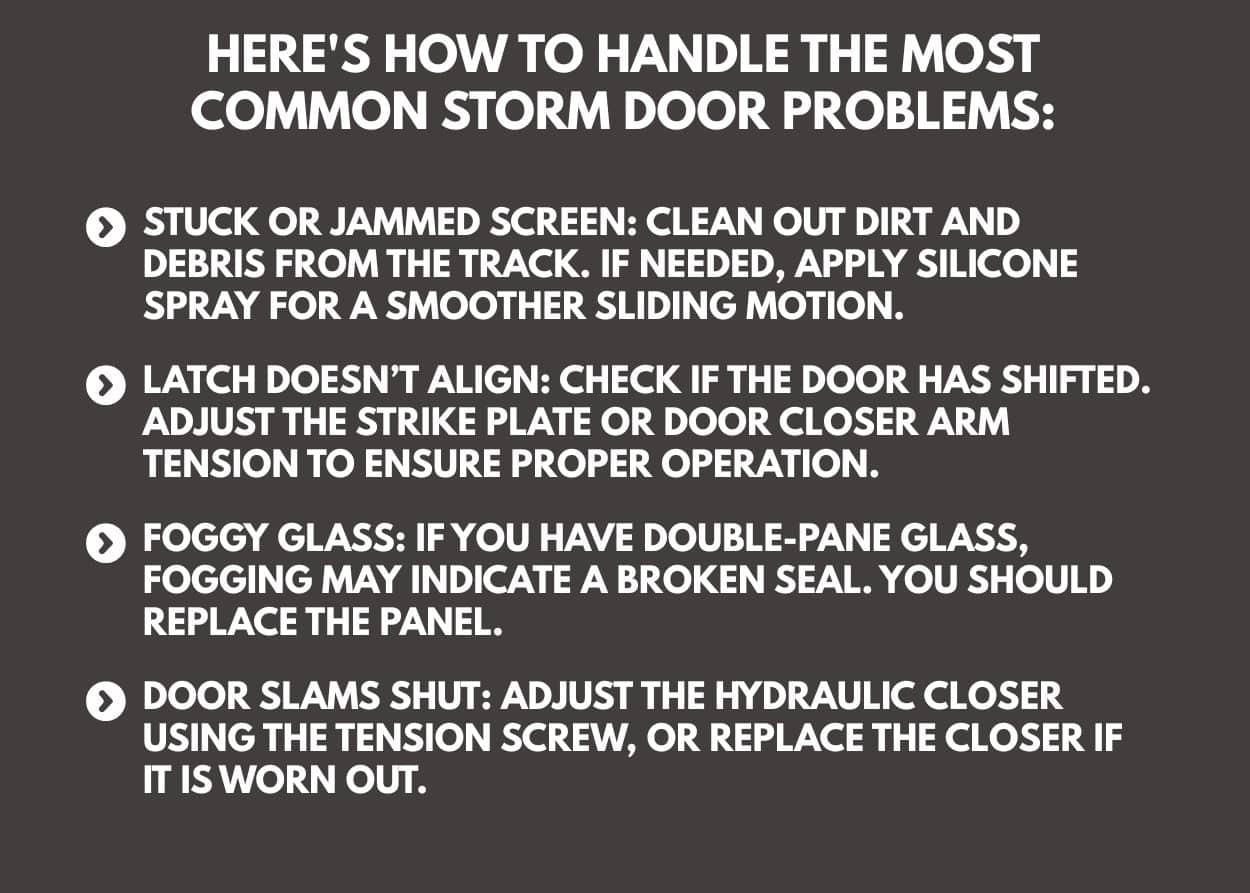
- Stuck or jammed screen: Clean out dirt and debris from the track. If needed, apply silicone spray for a smoother sliding motion.
- Latch doesn’t align: Check if the door has shifted. Adjust the strike plate or door closer arm tension to ensure proper operation.
- Foggy glass: If you have double-pane glass, fogging may indicate a broken seal. You should replace the panel.
- Door slams shut: Adjust the hydraulic closer using the tension screw, or replace the closer if it is worn out.
Most problems are fixable with basic tools and a little patience.
How Do I Choose the Right Storm Door for My Home?
It depends on a few factors:
- Climate: In cold areas, look for insulated glass and tight seals. In warm climates, opt for a model that features a screen for improved airflow.
- Home style: Choose finishes, glass designs, and hardware that complement your front door and siding.
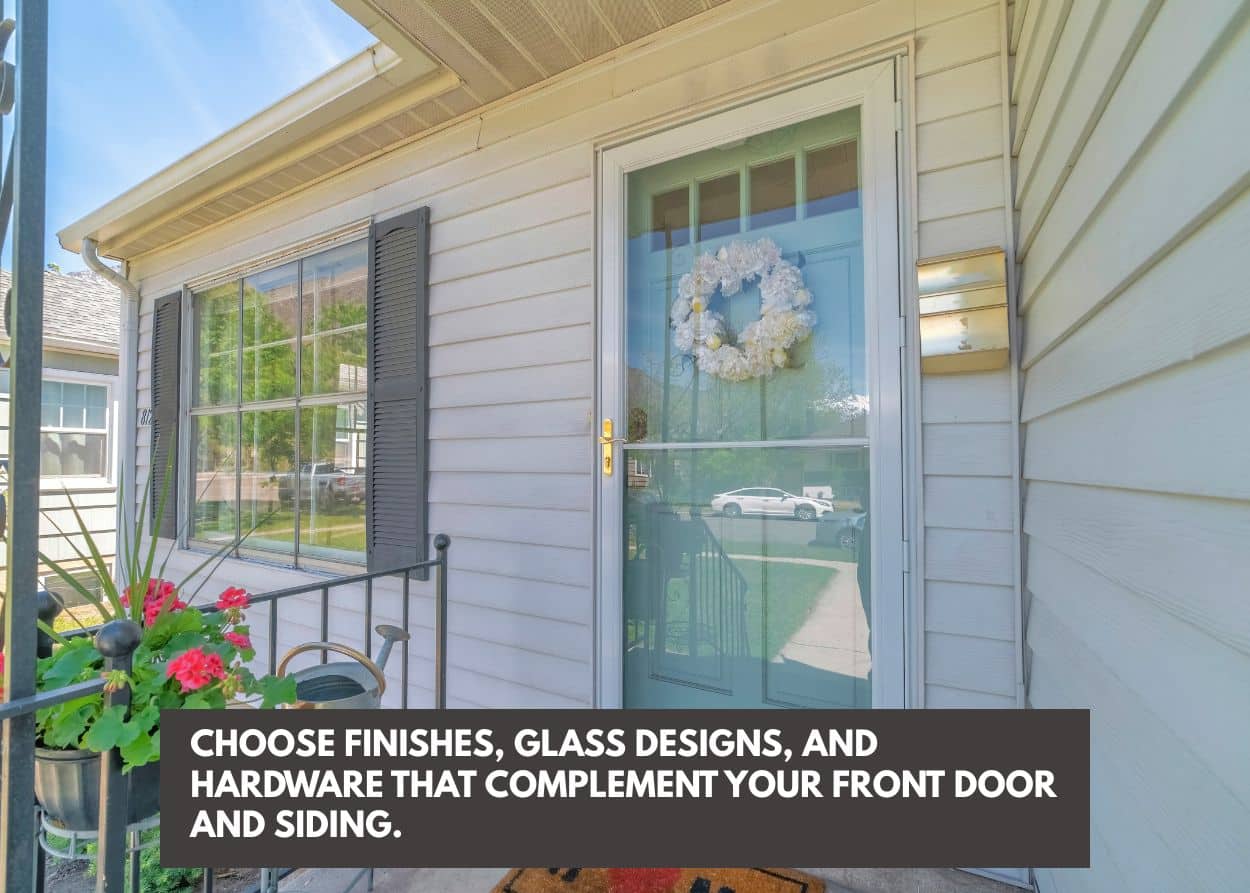
- Traffic: If your door experiences heavy daily use, prioritize durability, ease of use, and features such as kickplates or heavy-duty hinges.
Can a Storm Door Help With Pet Safety or Access?
Yes! Many storm doors now include built-in pet doors that let your furry friends move in and out freely. If your pets are rough on doors, look for:
- Heavy-duty screens that resist clawing and pawing
- Reinforced lower panels to prevent damage
It’s a great way to balance your pet’s freedom with your home’s security.
Are Storm Doors Safe for Homes With Young Kids?
Absolutely—but safety features make a big difference. Look for:
- Slow-close hydraulic closers to avoid pinched fingers.
- Shatter-resistant tempered glass for added protection.
- Tamper-resistant locks to keep curious little ones secure
Many storm doors also allow you to keep your main door open while keeping kids safely inside.
Do Storm Doors Work With Smart Locks or Video Doorbells?
They can—but spacing is key. If you're using a smart deadbolt or Ring doorbell, check:
- Door clearance
- Glass panel placement
- Whether you’ll need a cutout for camera visibility
Can Storm Doors Be Painted or Refinished?
Yes, depending on the material:
- Wood storm doors can be sanded, repainted, or stained to match your trim
- Aluminum and vinyl doors are generally not meant to be repainted, though some paint-friendly finishes are available
It’s always a good idea to check the manufacturer’s recommendations before painting to avoid voiding warranties, though.
How Do I Know If My Entry Door Needs a Storm Door?
If you're not sure, ask yourself:
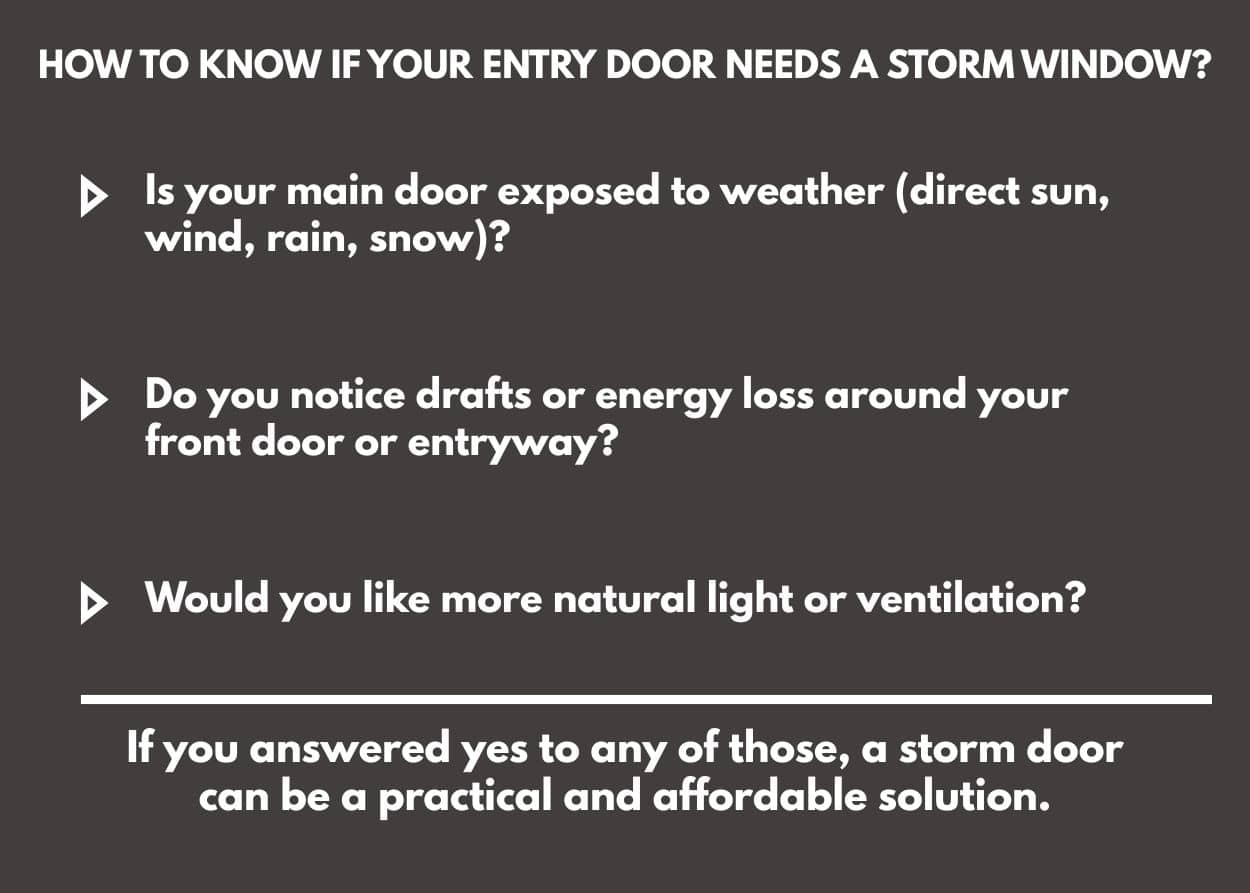
- Is your main door exposed to weather (direct sun, wind, rain, snow)?
- Do you notice drafts or energy loss around your front door or entryway?
- Would you like more natural light or ventilation?
If you answered yes to any of those, a storm door can be a practical and affordable solution.
What’s the Lifespan of a Typical Storm Door?
With proper care, most storm doors last between 10 and 20 years. Lifespan depends on:
- Material: Aluminum and fiberglass tend to last longer than wood
- Maintenance: Regular cleaning, lubrication, and inspection prolong life
- Exposure: Doors that take a beating from the sun or rain may wear out faster
Will a Storm Door Work With a Double Entry Door Setup?
Yes—but you’ll need a custom or French-style storm door kit. Here’s what to consider:
- Measure both doors and confirm the opening is compatible
- Choose coordinated glass panels for symmetry
- Work with a professional installer for the best results
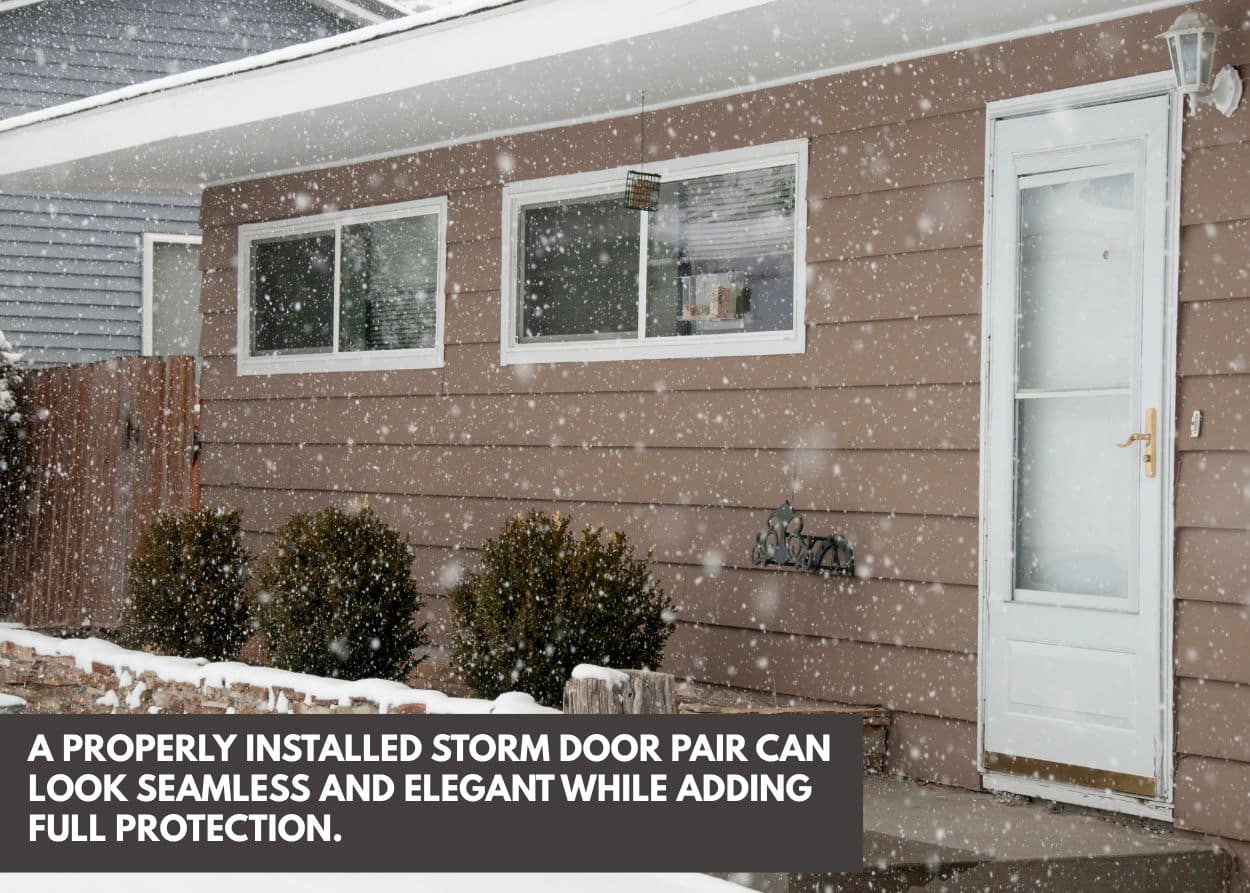
A properly installed storm door pair can look seamless and elegant while adding full protection.
Conclusion
Storm doors may seem like a small detail—but they do a lot. They protect your entryway, boost energy efficiency, improve airflow, and even add a polished look to your home. With so many options available, having the right information can make all the difference in choosing the perfect storm door.
At Graber Supply, we carry a full line of quality storm doors from Andersen, Provia, and Home Guard, and offer expert advice to help you get it done right—Whether you're installing your first storm door or replacing an old one.
Contact us today or stop by our Amboy, IN, location to speak with our team. We’re always happy to help you make the best choice for your home.
Further Reading
Looking for more information on storm doors and entry doors? Here are some links to our blogs:
Home Storm Doors: The Ultimate Guide [including their 6 main benefits]
9 Reasons A New Home Entry Door Is The Right Choice (and how to choose the right one)!
Energy Efficiency and Insulation in Entry Doors – Opening the Door to Energy Efficiency














